Abstract
1 L(-)- and D(+)-bupivacaine in eight different concentrations from 0.06 to 7.69 mmol/l (0.002--0.25%) and physiological saline were given intradermally to seventeen volunteers, using a double-blind technique. 2 Local colour changes were observed as 'nil', 'pink' or 'pale' and analgesia to pinprick was assessed every 10 min to give an estimate of apparent in vivo potency and duration of action (50% recovery). 3 Both isomers were vasodilator in all cases at 7.69 mmol/l, but the incidence of vasodilatation waned with decreasing concentration, more rapidly with L(-)-than with D(+)-bupivacaine. 4 Only L(-)-bupivacaine showed a vasoconstrictor effect. This was maximal at a concentration of 0.48 mmol/l, when the incidence of pallor was 92%. 5 L(-)-bupivacaine had a longer duration of analgesic action than the (D+)-isomer from 0.48-3.84 mmol/l; this was reflected in a higher apparent in vivo potency.
Full text
PDF
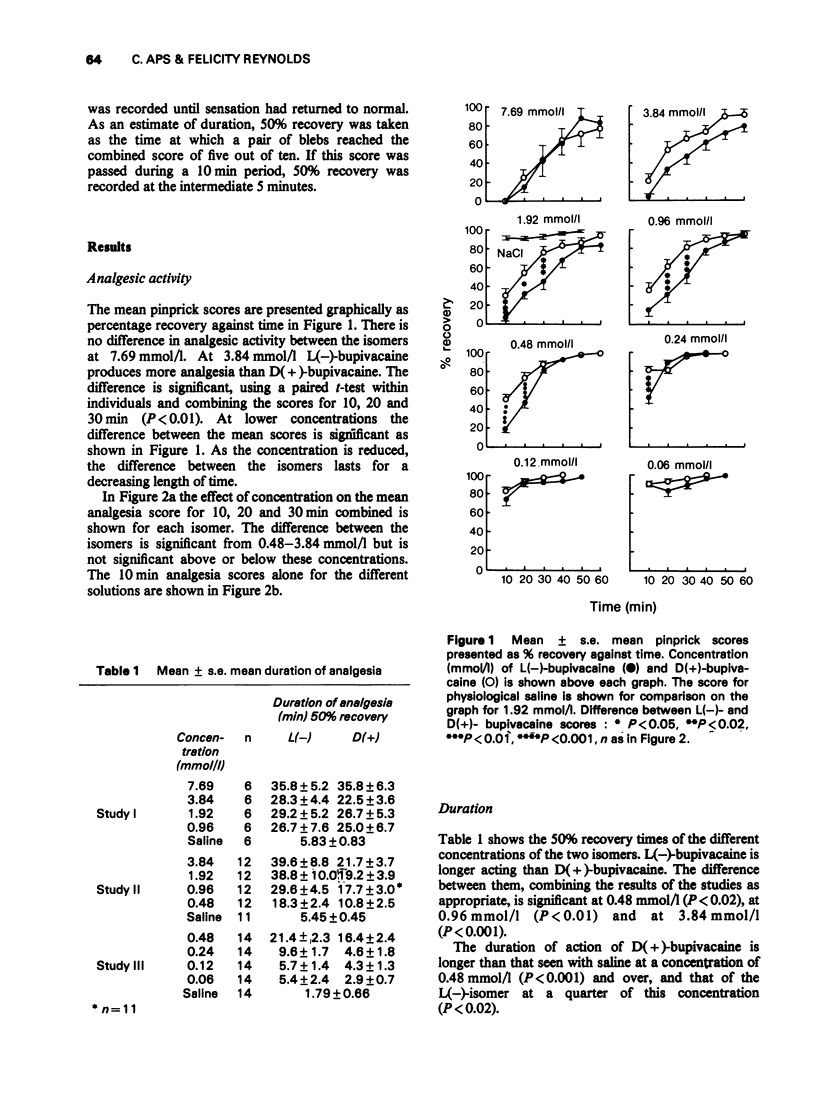
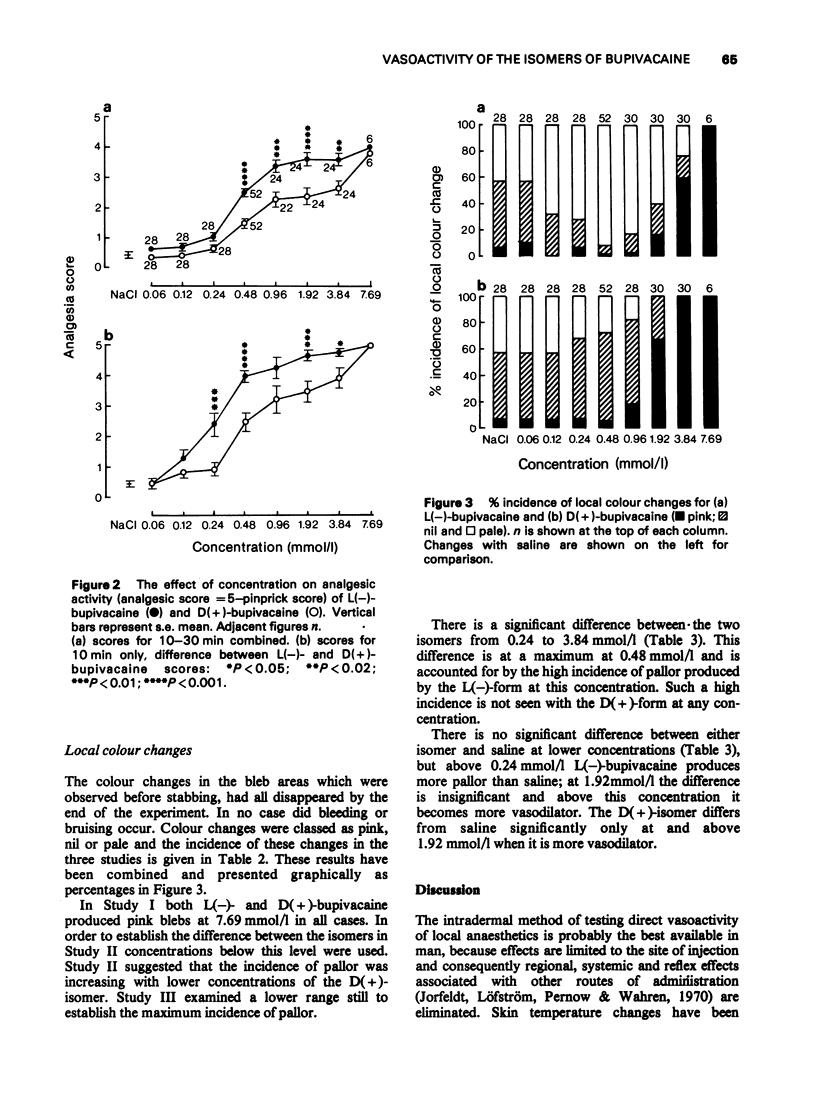
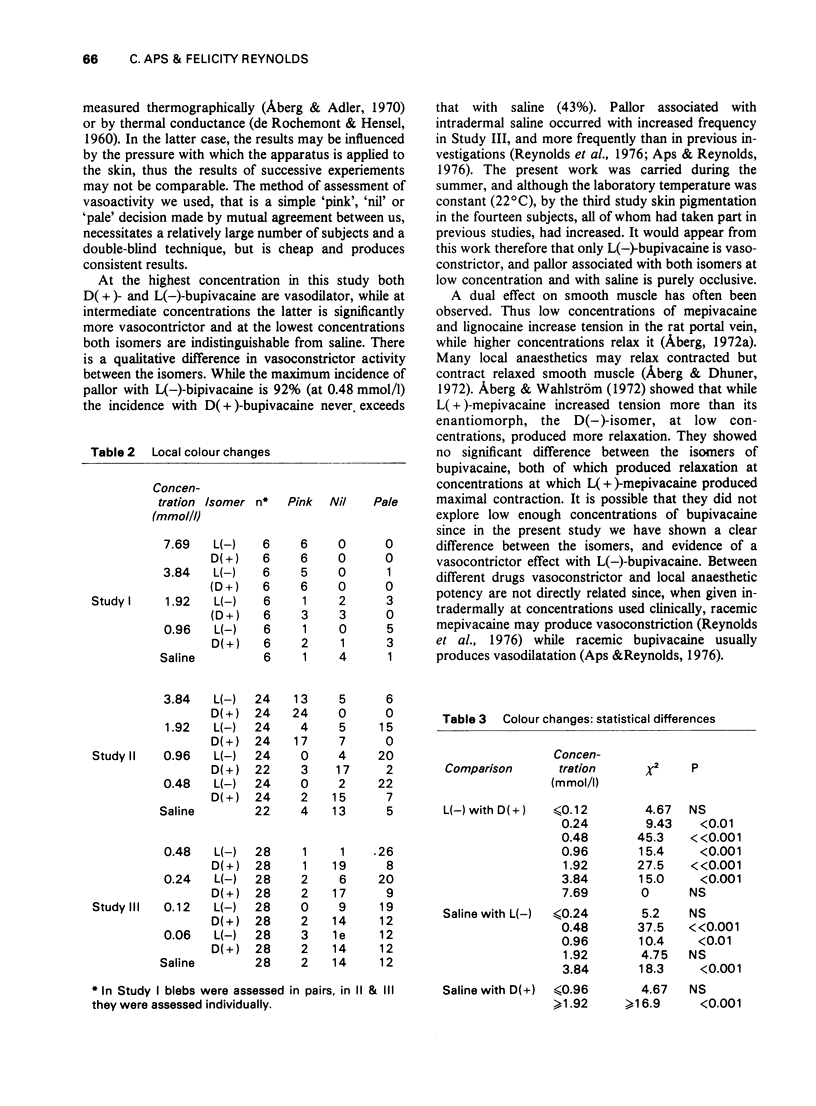
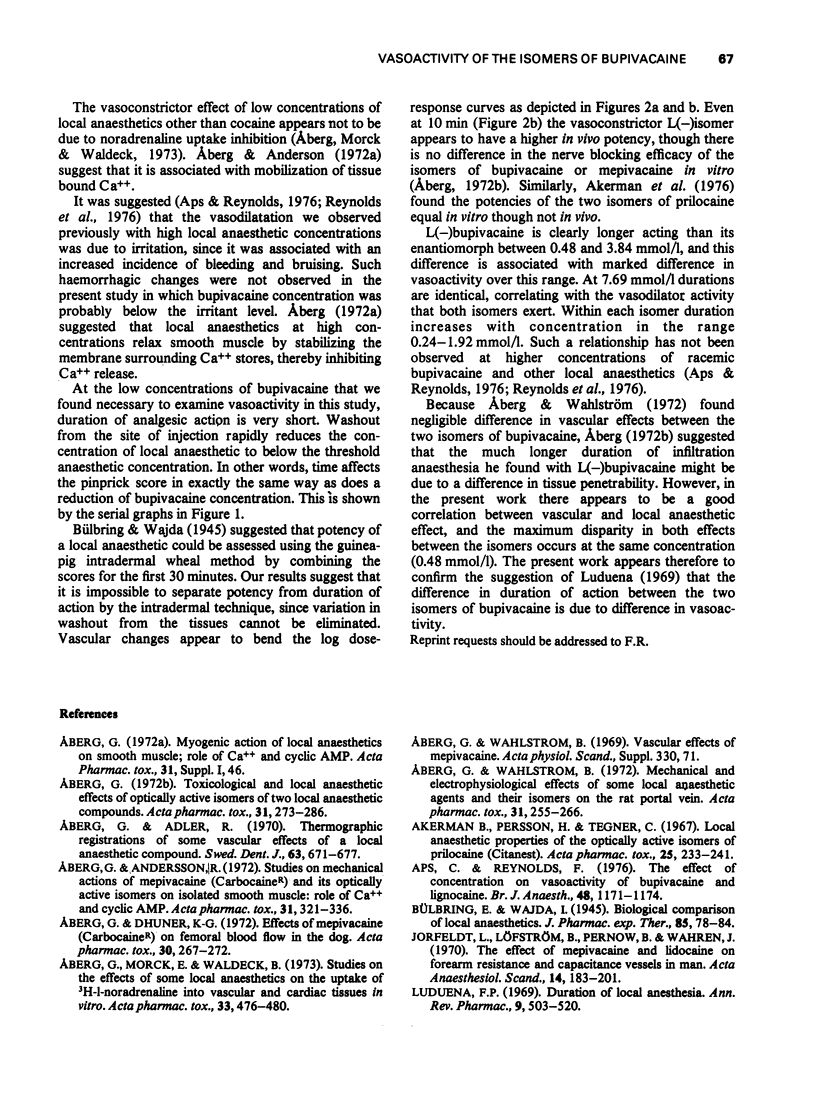
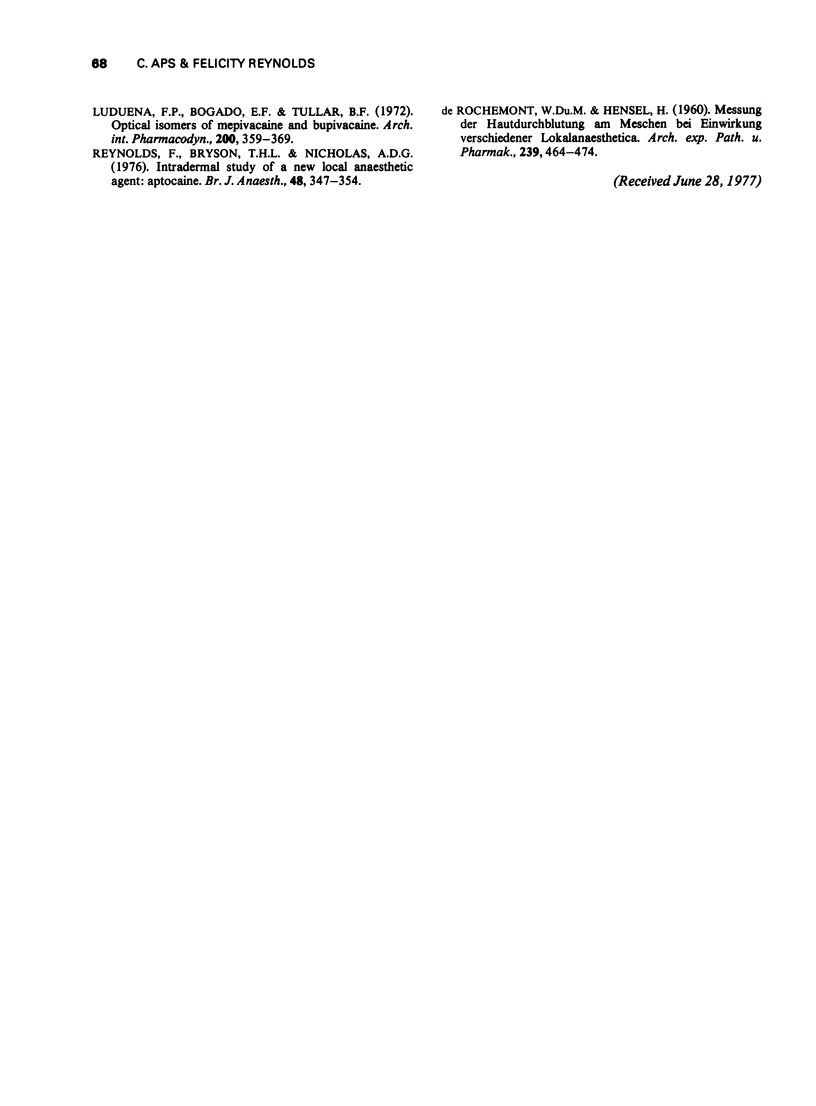
Selected References
These references are in PubMed. This may not be the complete list of references from this article.
- Aberg G., Adler R. Thermographic registrations of some vascular effects of a local anaesthetic compound. Sven Tandlak Tidskr. 1970 Oct;63(10):671–678. [PubMed] [Google Scholar]
- Aberg G., Andersson R. Studies on mechanical actions of mepivacaine (Carbocaine) and its optically active isomers on isolated smooth muscle: role of Ca ++ and cyclic AMP. Acta Pharmacol Toxicol (Copenh) 1972;31(5):321–336. doi: 10.1111/j.1600-0773.1972.tb03596.x. [DOI] [PubMed] [Google Scholar]
- Aberg G., Dhunér K. G. Effects of mepivacaine (Carbocaine) on femoral blood flow in the dog. Acta Pharmacol Toxicol (Copenh) 1972;31(4):267–272. doi: 10.1111/j.1600-0773.1972.tb00682.x. [DOI] [PubMed] [Google Scholar]
- Aberg G. Toxicological and local anaesthetic effects of optically active isomers of two local anaesthetic compounds. Acta Pharmacol Toxicol (Copenh) 1972;31(4):273–286. [PubMed] [Google Scholar]
- Aberg G., Wahlström B. Mechanical and electrophysiological effects of some local anaesthetic agents and their isomers on the rat portal vein. Acta Pharmacol Toxicol (Copenh) 1972;31(4):255–266. doi: 10.1111/j.1600-0773.1972.tb00681.x. [DOI] [PubMed] [Google Scholar]
- Akerman B., Persson H., Tegnér C. Local anaesthetic properties of the optically active isomers of prilocaine (Citanest). Acta Pharmacol Toxicol (Copenh) 1967;25(2):233–241. doi: 10.1111/j.1600-0773.1967.tb01428.x. [DOI] [PubMed] [Google Scholar]
- Aps C., Reynolds F. The effect of concentration on vasoactivity of bupivacaine and lignocaine. Br J Anaesth. 1976 Dec;48(12):1171–1174. doi: 10.1093/bja/48.12.1171. [DOI] [PubMed] [Google Scholar]
- Jorfeldt L., Löfström B., Pernow B., Wahren J. The effect of mepivacaine and lidocaine on forearm resistance and capacitance vessels in man. Acta Anaesthesiol Scand. 1970;14(3):183–201. doi: 10.1111/j.1399-6576.1970.tb00964.x. [DOI] [PubMed] [Google Scholar]
- Luduena F. P., Bogado E. F., Tullar B. F. Optical isomers of mepivacaine and bupivacaine. Arch Int Pharmacodyn Ther. 1972 Dec;200(2):359–369. [PubMed] [Google Scholar]
- Luduena F. P. Duration of local anesthesia. Annu Rev Pharmacol. 1969;9:503–520. doi: 10.1146/annurev.pa.09.040169.002443. [DOI] [PubMed] [Google Scholar]
- Reynolds F., Bryson T. H., Nicholas A. D. Intradermal study of a new local anaesthetic agent aptocaine. Br J Anaesth. 1976 Apr;48(4):347–354. doi: 10.1093/bja/48.4.347. [DOI] [PubMed] [Google Scholar]


